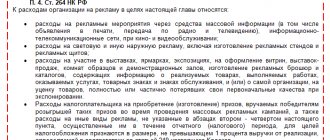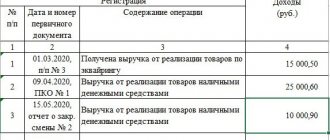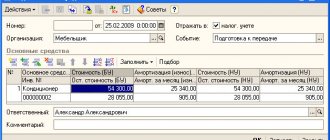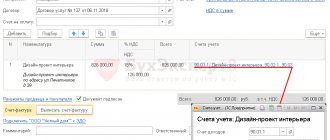Definitions of the concept of income, non-operating income
Non-operating income is income the receipt of which is not directly related to the production and sale of products.
The term “income” is an economic category. For many centuries, the essence and role of profit in the economy has been studied.
Regarding the definition of this concept among scientists, there is no consensus, and there are also contradictions associated with its economic essence, with their classification, especially during the formation of enterprise income in the process of their operating activities.
This requires deep theoretical studies of the economic essence and classification of income.
Some scientists believe that the analysis of the concept of “income” has its origins in the studies of the classics.
Scientists consider various provisions of this concept and interpret it in different ways.
This category has become the subject of wide debate among academic economists who belong to various economic schools and movements.
At one time, the famous English specialist economist John Richard Hicks spoke about this and noted that most scientists had some confusion when they accepted different interpretations of income, which were quite contradictory and not completely satisfactory.
Several modern theories that are based on these approaches and to a certain extent integrate them, the following should be noted:
- The income of an enterprise in the factor theory is considered as the result of the beneficial use of all types of economic resources or production factors;
- The theory of entrepreneurial income - interprets income as compensation to the entrepreneur for carrying out entrepreneurial activities at his own risk;
- A separate type of additional income received from conducting effective organizational and technological innovations that help increase labor productivity is considered by the theory of innovative income;
- The theory of monopoly income explains the receipt of higher income due to insufficient competition.
back to menu ↑
Table. Fragment of the Book of accounting of income and expenses of JSC "Pleiada"
| N p/p | Date and number of the primary document | Contents of operation | Income taken into account when calculating the tax base | Expenses taken into account when calculating the tax base |
| 1 | 2 | 3 | 4 | 5 |
| … | … | … | … | … |
| 57 | Accounting certificate No. 37 dated 02/20/2007 | Unclaimed accounts payable written off | 124 300 | — |
| … | … | … | … | … |
Due to an error, the tax base of Pleiada CJSC was underestimated by 124,300 rubles, and the tax base by 7,458 rubles. (RUB 124,300 x 6%).
On a note. And there are no more non-operating income in accounting
By Order of the Ministry of Finance of Russia dated September 18, 2006 N 116n, changes were made to PBU 9/99 “Organizational Income”, which will need to be followed starting with reporting for the past year. Now there are no more such incomes as non-operating and operating income. This will certainly make the accountant’s work easier - he won’t have to rack his brains about what to include in which group. In accounting there will only be two types of income: from ordinary activities, as before, and others, that is, all the rest.
L.A. Maslennikova
K. e. n.,
expert of the magazine "Simplified"
Non-operating income includes all other income that is not directly related to the sales process. These are “passive” incomes that do not depend on the main activities of the organization.
In accordance with Art. 250 of the Tax Code of the Russian Federation, non-operating income is:
- dividends received from equity participation in other organizations;
- fines, penalties and other sanctions for violations of contractual obligations;
- amounts of compensation for losses or damages recognized by the debtor or subject to payment by debtors on the basis of a court decision that has entered into legal force;
- income from the rental of property (including land plots), if they do not relate to income from sales;
- interest received under loan (credit) agreements;
- the amount of recovery reserves, expenses for the formation of which were previously taken into account for tax purposes;
- the cost of gratuitously received property (work, services), property rights, except for the cases specified in Art. 251 NKRF;
- profit of previous years identified in the current period;
- amounts of accounts payable for which the statute of limitations has expired;
- exchange differences;
- the cost of surplus, inventories and other property identified as a result of the inventory;
- income distributed in favor of the organization through its participation in a simple partnership;
- the cost of materials or other property received during dismantling or liquidation of fixed assets being taken out of service (except for the cases provided for in subclause 18, clause 1, article 251 of the NKRF);
- other income established by Art. 250 Tax Code of the Russian Federation.
The list of non-operating income is open, therefore, it should also include those incomes that are not directly provided for in this list (with the exception of income not taken into account for tax purposes (Article 251 of the Tax Code of the Russian Federation).
For example, during the reporting period, the Omega organization received the following income:
— revenue from sales of own-produced products 118,000 rubles, including VAT 18,000 rubles;
— revenue from the sale of purchased goods 59,000 rubles, including VAT 9,000 rubles;
— funds under a loan agreement in the amount of RUB 150,000;
- a computer received free of charge from an individual.
Non-operating operations
Regular activities are divided into operational and other (investment and financial).
The main activities of the enterprise, as well as other activities that are not financial activities, are called operating activities.
During its main activities, an enterprise produces certain products or provides services.
In this case, material assets and labor are used, and their value is transferred to the resulting product, so it also has its own value.
Core activities include operations related to the production or sale of products (goods, services), which are the main purpose of creating an enterprise and replenish the main part of its income.
In investment activity in the country as a whole, a significant part of expenses is made up of expenses for investments in fixed assets (42%).
Expenses on non-sales operations amount to 33%, expenses on other sales - 20%, and expenses on maintaining social facilities - 5%.
As can be seen from the graph, during investment activities, expenses for non-operating operations constitute a significant part.
Other non-operating income includes:
- sale of foreign currency,
- operational lease of assets,
- lease of other current assets,
- receiving income or receiving losses from exchange rate differences,
- definition of subsidies and guarantees,
- formation of reserves for doubtful debts,
- carrying out research and development,
- reserves assessment,
- payment of sanctions under business contracts and the like.
Financial activity is understood as one that is associated with changes in the size and composition of equity and debt capital of an economic entity.
back to menu ↑
Classification of non-operating income and expenses
Non-operating expenses (hereinafter referred to as BP) are expenses of an enterprise that are not directly related to ordinary or other types of business activities.
The structure of non-operating expenses includes reasoned costs for carrying out activities not specifically related to production/sales.
The list of non-operating expenses is considered open, since “other reasonable expenses” may be included in the structure of non-operating expenses.
Therefore, the list of non-operating income and expenses is determined by the exclusion method.
To correctly classify income and expenses, it is necessary to take into account non-operating income that is associated with the usual types of business activities of a particular enterprise and consolidate this list in the accounting policy.
Important: when calculating this balance, extraordinary income and expenses are taken into account. In Form No. 2 “Profit and Loss Statement” this ratio is called “Profit / loss before tax”.
For non-operating income, the time of receipt of profit is recognized as: the time when the parties signed the property acceptance certificate (by analogy with the work acceptance certificate); the time when funds were received into the taxpayer’s current account; time of settlements in accordance with the terms of the concluded agreement.
Non-operating expenses for tax purposes include costs that are not associated with the production and sale of products, and expenses that are recognized as such by virtue of a special regulation in the Tax Code of the Russian Federation.
The list of certain types of expenses that are not related to the production and sale of products is indicated in paragraph 1 of Article 265 of the Tax Code of the Russian Federation. This list is open.
The damages listed in this paragraph are also included in VR.”
back to menu ↑
List of non-operating expenses
Every company suffers some monetary losses that have nothing to do with its main line of business. Such costs, for example, can include the purchase of new furniture for the organization’s office, because such a purchase will not improve the quality of products or services in any way. In this regard, we conclude that non-operating expenses are cash costs that are not related to the production process or the sale of services and goods.
Non-operating expenses include:
- money spent on paying sanctions, fines and penalties to other companies;
- the amounts of last year's losses that were discovered only in the current reporting year;
- monetary losses from the provision of mothballed companies;
- negative results of exchange rate differences in foreign currencies;
- losses from canceled debts due to theft, embezzlement or shortage;
- damage from the cessation of activity of not fully depreciated funds.
Other non-operating expenses include cash losses resulting from the cancellation of receivables due to the insolvency of debtors or the end of the statute of limitations. Simply put, we are talking about losses that there is no longer any chance of getting.
In Art. 265 Tax Code lists more than 23 types of non-operating losses. So, non-operating expenses include:
- spending money on maintaining property received under a lease agreement;
- losses in the form of interest accrued on debt obligations;
- funds that were used to service securities;
- costs accrued in case of revaluation of property objects, the value of which is calculated in foreign currencies;
- fees and expenses associated with litigation;
- fines, sanctions and penalties for neglect of contractual obligations, recognized by a court decision.
Non-operating expenses are also losses of the taxpayer in the reporting period:
- losses from previous reporting periods that were discovered only in this tax period;
- bad debts that will be covered by funds from the reserve account;
- losses caused by downtime for production reasons;
- losses caused by force majeure.
Article 265 of the Tax Code of the Russian Federation, non-operating expenses, provides a list of all types of other company costs that every accounting employee needs to know. This is due to the fact that they are faced with the task of correctly filling out all the lines of the tax report.
Article 120 “Non-operating income”
Non-operating income includes:
- payment of fines, penalties, penalties;
- profit from reimbursement of delivered expenses;
- profit for the previous period;
- the amount of monetary obligations for which the claim period has expired;
- the difference in rates that arose during the revaluation of property and obligations expressed in foreign currency;
- the amount of additional valuation of assets based on the results of revaluation;
- the price of property accepted for accounting and classified as surplus;
- the amount of income of the reporting period, which is associated with the receipt of gratuitous assets starting from 01/01/2000.
To schematically imagine what non-operating income is, we can consider the dynamics of non-operating income of one company.
As we can see from the graph, non-operating income may change throughout the year, but not significantly.
back to menu ↑
How to take into account other (not related to core activities) income and expenses
Regulatory regulation
Tax Code of the Russian Federation (Chapter 25 “Tax on corporate profits”) (Tax Code of the Russian Federation)
Expert commentary
A term used for corporate income tax. In accounting, a similar concept is used - “Other income”. For income tax, all income is divided into two categories - Income from sales and Non-operating income.
Thus, Article 248 of the Tax Code of the Russian Federation determines that income includes:
1) income from the sale of goods, works or services and property rights (income from sales) - determined in accordance with Art. 249 of the Tax Code of the Russian Federation.
2) non-operating income - determined in accordance with Art. 250 Tax Code of the Russian Federation.
Income from sales is associated with the sale (sale) of goods, works, and services. Non-operating income, as can be deduced from the name, is not related to sales (sales).
Example
Income from the sale of goods - Income from sales
Income from a fine received for violating the terms of the contract - Non-operating income
Non-operating income is determined by Article 250 of the Tax Code of the Russian Federation. This article contains a list of non-operating income, which consists of more than 20 items. At the same time, this list is open, since before the description of the list of non-operating expenses it is indicated “Non-operating income of the taxpayer is recognized, in particular
, income:...".
If the income does not relate to sales income, then it is recognized as non-operating income. This is expressly stated in Art. 250, which states that non-operating income is income not specified in Article 249 of the Tax Code of the Russian Federation (i.e. not related to income from sales).
Examples of non-operating income:
— from equity participation in other organizations, with the exception of income allocated to pay for additional shares (shares) placed among the shareholders (participants) of the organization;
- in the form of a positive (negative) exchange rate difference resulting from the deviation of the sale (purchase) rate of foreign currency from the official rate established by the Central Bank of the Russian Federation on the date of transfer of ownership of foreign currency;
- in the form of fines, penalties and (or) other sanctions for violation of contractual obligations recognized by the debtor or payable by the debtor on the basis of a court decision that has entered into legal force, as well as amounts of compensation for losses or damages.
Procedure for recognizing non-operating income
(with the accrual method) defined by Art. 271 Tax Code of the Russian Federation. So, for example, the date of receipt of income is recognized as:
1) the date of signing by the parties of the act of acceptance and transfer of property (acceptance and delivery of work, services) - for income:
in the form of property (work, services) received free of charge;
for other similar income;
2) the date of receipt of funds to the taxpayer’s current account (cash) - for income:
in the form of dividends from equity participation in the activities of other organizations;
in the form of gratuitously received funds;
in the form of refunds of contributions previously paid to non-profit organizations that were included in expenses;
in the form of other similar income;
3) the date of making payments in accordance with the terms of concluded agreements or presenting to the taxpayer documents serving as the basis for making calculations, or the last day of the reporting (tax) period - for income:
— from renting out property;
— in the form of license payments (including royalties) for the use of intellectual property;
- in the form of other similar income;
4) the date of recognition by the debtor or the date of entry into legal force of the court decision - for income in the form of fines, penalties and (or) other sanctions for violation of contractual or debt obligations, as well as in the form of amounts of compensation for losses (damage);
5) the last day of the reporting (tax) period - for income:
in the form of amounts of restored reserves and other similar income;
in the form of income distributed in favor of the taxpayer with his participation in a simple partnership;
on income from trust management of property;
for other similar income;
6) Under loan agreements and other similar agreements (other debt obligations, including securities), the validity of which falls on more than one reporting period, income is recognized as received and is included in the corresponding income at the end of the month of the corresponding reporting period.
In the event of termination of the agreement (repayment of the debt obligation) before the expiration of the reporting period, income is recognized as received and is included in the relevant income on the date of termination of the agreement (repayment of the debt obligation).
When determining non-operating income in the form of fines, penalties or other sanctions for violation of contractual obligations, as well as amounts of compensation for losses or damages, taxpayers who determine income using the accrual method reflect the amounts due in accordance with the terms of the agreement. If the terms of the agreement do not establish the amount of penalties or compensation for losses, the taxpayer-recipient does not have an obligation to accrue non-operating income for this type of income. When collecting a debt in court, the taxpayer’s obligation to accrue this non-operating income arises on the basis of a court decision that has entered into legal force (Article 317 of the Tax Code of the Russian Federation).
Under the cash method (clause 2 of Article 273 of the Tax Code of the Russian Federation), the date of receipt of income is the day of receipt of funds in bank accounts and (or) to the cash desk, receipt of other property (work, services) and (or) property rights, as well as repayment of debt to the taxpayer in another way (cash method).
Important court decisions
A non-profit organization does not have the right to reduce non-operating income (exchange differences, interest on bank account agreements) for expenses in the form of charitable assistance, labor costs and social needs (Definition of the Constitutional Court of the Russian Federation dated November 24, 2005 N 412-O).
Historical reference
The term was introduced on January 1, 2002 in connection with the adoption of Chapter 25 “Organizational Profit Tax” of the Tax Code of the Russian Federation by federal law dated 06.08.2001 N 110-FZ (Article 13).
Additionally
Sales of goods, works or services
Dividend
Income
Income from sales
Profit
Article 130 “Non-operating expenses”
This article reflects the following expenses recognized in the reporting period:
- payment of fines, penalties, penalties for non-compliance with the terms of agreements that are recognized by the debtor company;
- coverage for losses caused by a legal entity (for example, registered as an LLC);
- identified costs of previous years;
- the amount of debt for which the claim period has expired, other debts that cannot be collected;
- exchange rate differences arising when assessing property and obligations expressed in foreign currency;
- the amount of asset discount based on the results of the recalculation made at the end of the year;
- loss from the deduction of previously accrued debts for thefts, for which the documents were returned by the judicial authority in connection with the bankruptcy of the defendant;
- loss from theft of material and other valuables, the participants of which have not been identified according to the findings of the court.
BP income arises, as a rule, at every enterprise.
Advice: here it is necessary to consider accounting for income received from foreign currency transactions and from operating leases.
back to menu ↑
How is a change in the fair value of BP reflected in accounting?
In accounting, the amount of upward changes in the fair value of objects is included in the PD.
In tax accounting, the procedure for reflecting an increase in the fair value of an object depends on the method of accounting for such an object.
Thus, a VR object is taken into account as:
- object of fixed assets (hereinafter referred to as fixed assets), then an increase in the fair value of the asset is considered as an additional valuation. Therefore, the pre-tax financial result should be reduced by the amount of the revaluation within the limits of the depreciation amount previously expensed. That is, if the fair value of the object was not discounted, the income tax base increases by the entire amount of the revaluation;
- as a separate category (in this case the rules established for fixed assets do not apply), then the increase in fair value is reflected in income, that is, it does not participate in the adjustment of the financial result.
Important: enterprises whose annual income exceeds 100 million rubles are required to adjust their pre-tax financial results.
back to menu ↑
How to record non-operating expenses?
Now let’s figure out how to properly draw up such documents. When preparing an accounting report and thinking about recording costs that are not directly related to production, you need to fill out 91 accounts called “Other expenses and income.” The specific subaccount is 91-2, called “Other expenses”.
If you are faced with the task of filling out a tax return and you have already reached losses, pay attention to line No. 200. This is where information of this type is recorded. Do not forget to enter the amount of all expenses for a specific period.
Since we started discussing preparing a tax return, we should mention filling out Schedules and other non-obvious lines. For example, in line 201 of the second Appendix to the second sheet of the declaration, interest paid on loans and securities issued by the company is always written.
In line 202, you must indicate the amount of contributions to the social reserve that protects people with disabilities. One line later, in field 204, you should reflect all costs aimed at eliminating fixed assets (fixed assets) and intangible assets (intangible assets). Field 203 must be left blank.
Please also note that for line 205 you will have to calculate the amount that is paid as contractual sanctions, if any were awarded to your organization. As a result, the sum of indicators in lines 201–205 should not be greater than the figure indicated in line 200 (the total number of costs appears there).
Regarding non-operating expenses, a simple rule applies, which indicates the need to fill out fields No. 300, 301 and 302. We indicate the total number, past unpaid debts and written off loans, respectively. Make sure that the sum of fields 301 and 302 does not exceed the figure indicated in line No. 300.
What are the features of accounting for the sale of fixed assets?
In accounting, an asset that an enterprise plans to sell is transferred to non-current assets intended for sale.
Tax accounting does not provide for the allocation of fixed assets planned for sale into a separate group, therefore, at the time of sale they continue to be considered fixed assets.
Enterprises that adjust their pre-tax financial results in the reporting period in which the fixed assets asset was sold must:
- Increase accounting financial results by the amount:
- depreciation accrued in accounting before the facility was decommissioned;
- markdowns and losses from reduction of utility included in the expenses of the reporting period;
- residual value of the object in accounting.
- Reduce the accounting financial result by the amount:
- depreciation accrued in tax accounting until the moment the facility is decommissioned;
- revaluation, which was included in income in the reporting period of sale of an asset within the amount of depreciation previously included in expenses;
- residual price for the object, determined according to the rules of the Tax Code.
back to menu ↑
What is the procedure for compensation for damage and how to reflect this operation in accounting?
The guilty person may voluntarily compensate for the damage caused to the enterprise.
Also, with the consent of the manager or owner of the enterprise, the employee may transfer equivalent property to cover the damage caused.
Money to pay off the damage can be deposited by the guilty person through the cash register or into the bank account of the enterprise.
If the employee cannot immediately compensate for the entire amount of damage, it can be divided into parts.
To do this, he must write a statement of voluntary compensation for damage and sign it with the manager.
At the request of the employee, the amount of damage may be deducted from his salary.
But it should be remembered that the amount of all deductions from wages, including for damages, cannot exceed 20% of wages.
The amount of compensation for damage by the guilty party is considered income from other operating activities and is reflected in the credit of the subaccount.
Repayment of the shortfall is reflected in debit depending on the method of receipt of funds.
Accounting for damage compensation operations by the guilty party is carried out as follows:
back to menu ↑
How is the initial cost of freely received inventory determined?
The initial cost of such inventories is their price, taking into account the costs incurred.
For example, the cost of purchased goods is determined as their selling price, taking into account sales costs and the amount of profit based on the markup for similar products.
Tip: a financial instrument is a contract that simultaneously creates (increases) a financial asset in one enterprise and a financial liability or equity instrument. For example, financial instruments include shares, certificates of deposit, futures, and options.
back to menu ↑
Recognition of expenses
This group of expenses refers to the fixed costs of the enterprise, which do not depend on the volume of its activities.
It is impossible to establish a direct connection between such expenses and the receipt of income in any period, which determines the procedure for their recognition.
IR are recognized as expenses of the reporting period in which they are incurred, regardless of payment.
In addition, all taxpayers must apply adjustments when accounting for income taxes.
To more accurately determine the financial result, we recommend that you provide a list of other operating expenses and other costs in the order on the organization’s accounting policy.
back to menu ↑
Session 4 Non-operating income and expenses
How to form non-operating income in tax accounting
Non-operating income is stat. 250 of the Tax Code of the Russian Federation, company costs not mentioned in the stat. 249, but participating in the process of calculating the taxable base for business profit tax. Namely, in this case, we mean those revenues that were generated not as a result of the company’s work goals, but randomly, but nevertheless generate profit and require the transfer of income tax. A detailed list of 25 points is contained in the stat. 250 Tax Code.
Updated income tax return 2017
Non-operating income for income tax - list:
- Income from the company's participation in the work of other enterprises.
- The magnitude of positive exchange rate differences resulting from settlements on foreign currency obligations.
- The magnitude of positive exchange rate differences from the acquisition/sale of currency.
- Amounts of penalties, fines and/or penalties, compensation for damages recognized by the debtor counterparty or subject to payment by court decision.
- Proceeds from the use of intellectual rights.
- Accrued interest on debt obligations.
- When the company forms reserves, the amounts restored.
- Property or rights transferred to the enterprise free of charge.
- Income from lease/sublease obligations.
- Receipts from transactions of participation in a simple partnership.
- Previous income discovered in current periods.
- Fixed assets and intangible assets received free of charge under international agreements.
- Receipts from the cost of materials received during the dismantling of fixed assets.
- Proceeds from charity that are not spent for their intended purposes.
- Revenues received for the purpose of forming reserves and spent for other purposes by companies conducting activities using radiation.
- Remedies for reducing the share capital or authorized capital while the enterprise refuses to return the due value to the participants.
- Proceeds from the return of previously paid deposits by NPOs, subject to the inclusion of such amounts as expenses.
- Remedies for writing off creditor obligations upon expiration of the statute of limitations established by law.
- Proceeds from transactions with various financial instruments.
- Receipts from the identification of surplus inventory items during inventory activities.
- Receipts from the cost of printed media products in cases of their replacement/return.
- Proceeds from profit adjustments.
- Receipts from excise operations.
- Receipts from foreign controlled economic entities.
- Cash receipts from the equivalent of securities or real estate previously transferred for contribution to the target capital.
However, there are exceptions when classifying receipts as income. Thus, when determining income tax, the amounts of deposits, advances, funds for intermediary transactions, and borrowed amounts should not be taken into account. The full closed list contains stat. 251 NK.






